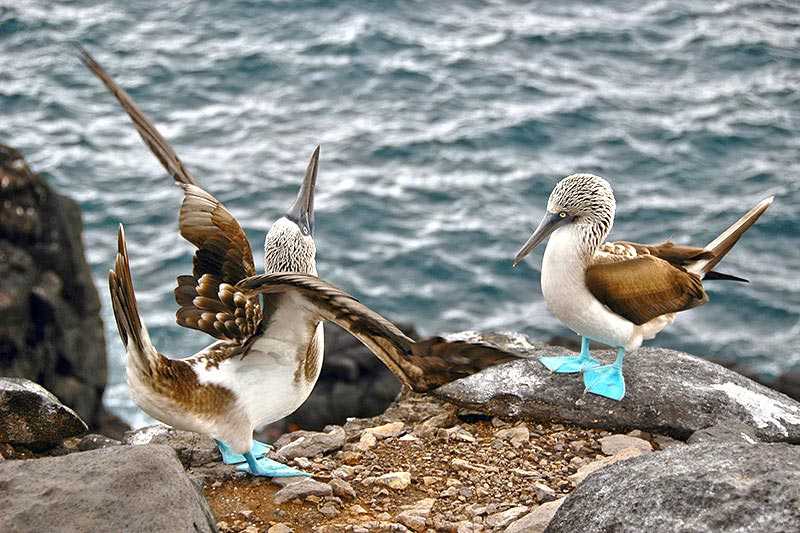Lords of the Dance – Birds’ Mating Rituals

Mating rituals of birds can be mystical, graceful and in some cases just plain comical – but be assured, they’re deadly serious to the birds that carry out complicated courtship rituals designed to sustain the survival of their species.
Birds, it seems, will go to almost any lengths to secure a mate.
Nature has adapted many birds’ plumage to give them the opportunity to impress the ladies. Extravagantly coloured plumage and the ability to flaunt these – like the peacock fans its tails –are all designed to demonstrate that they’re healthy, strong and a worthy mate.
Complicated birdsong is another feature – not only does this warn off other males from encroaching on their territory, it also demonstrates that the bird is mature and ready for the responsibilities mating brings. And when the males and females of some species join together in duets, they’re trying each other out for compatibility and then strengthening the bond between them.
Others demonstrate what good fathers they’ll be by feeding the female as they’d be expected to do to support her when she’s nesting and, once chicks are born, provide for both her and their offspring.
Some are natural builders and will construct elaborate nests for prospective mates to admire. This also serves the purpose of marking out a territory which they’re willing to defend. A few species even decorate the nest with moss, flowers and pebbles – not so different from humans, then!
Dancing is another feature designed to mark out the male from its competition – swooping dives, sky pointing, head dips, and even leapfrogging movements by some species show off experience and skill to would-be partners.
But new evidence suggests that some birds, like the crane, may just dance for the fun of it. New research by Dr Vladimir Dinets published in The International Journal of Avian Science shows that the crane will dance in play, rather than to attract a mate, defend their territory or fend off invaders of their territory.
In the young, it’s possibly a way of practising the skills the bird will need as an adult to survive in a hostile world, but older birds may just want to spice life up a little, strengthening the bonds between them and their mates.
While we may not understand the reasons why, it’s a lovely idea: that some birds dance for the same reasons we do – because it feels good.